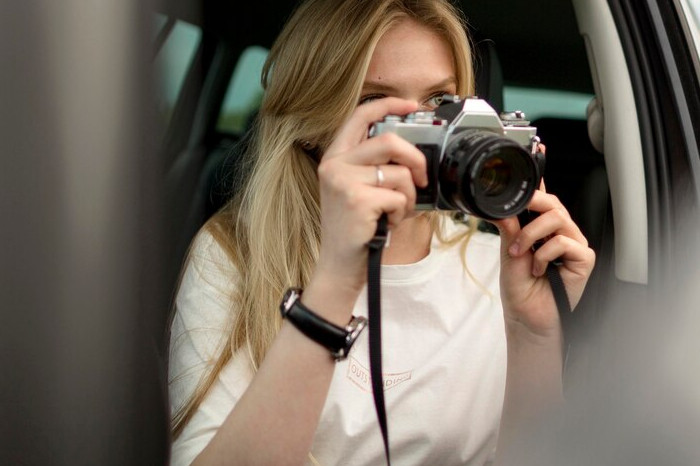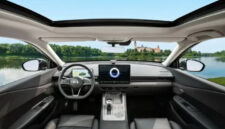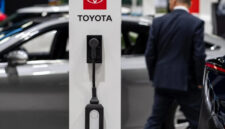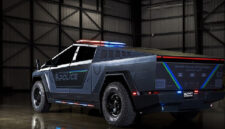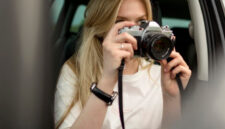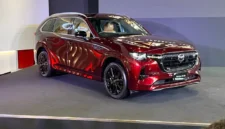BUSINESSWORTH.US – Car photography tips are key to capturing amazing vehicle images. It combines technical skills with creative vision. Knowing the basics of lighting, composition, and camera settings is crucial for professional results.
The right gear and techniques are vital in car photography. A strong mirrorless camera or DSLR is best for still shots. For action shots, a camera with fast autofocus and continuous shooting is needed. Understanding the vehicle’s unique features helps create impactful images.
Understanding the Basics of Car Photography
Car photography is all about taking pictures of cars to show off their looks and details. To do this well, you need to know the basics. This includes car photography angles, how to use light, and how to arrange your shot. It’s all about paying attention to the little things and understanding your subject.
Choosing the right angle for your photo is key. The car photography composition can make a big difference. You should try shooting from different sides and angles to add depth to your photos.
Lighting is also very important in car photography. The best times to take photos are during the golden hour or on overcast days. This softens the light and reduces harsh shadows, making your photos look better.
Essential Equipment for Professional Car Photography
For car photography tips, the right gear is key to amazing shots. A top-notch mirrorless camera or DSLR is a must for automotive photography. The Canon EOS 700D or Nikon’s version are favorites among pros. You’ll also need lenses for wide and standard shots.
Starting with car photography can cost about $800. This includes a camera, lenses, and extras. But for the best images, consider a semi-pro DSLR and quality lenses. The Canon EF-S17-55 f/2.8 IS USM lens, for instance, is around $1,000.
Don’t forget a tripod, polarization filter, and memory cards. A good camera backpack helps too. With the right tools and car photography tips, your automotive photography will shine.
- Camera body: Canon EOS 700D or Nikon equivalent
- Lenses: 17-55mm or 18-55mm zoom lens
- Accessories: tripod, polarization filter, memory cards
Mastering Camera Settings for Vehicle Photography
To get amazing car photos, knowing the best camera settings is key. This includes aperture, shutter speed, and ISO. The right settings can greatly improve your photos’ quality.
When editing car photos, enhancing details and colors is important. Adjusting exposure, contrast, and saturation can help. Also, removing unwanted reflections and noise boosts the photo’s quality.
- Aperture: A lower f-stop value (such as f/2.8) can create a blurred background, while a higher value (such as f/11) can provide greater depth of field.
- Shutter speed: Faster shutter speeds (such as 1/1000) can freeze motion, while slower speeds (such as 1/30) can create a sense of movement.
- ISO: Lower ISO settings (such as 100) are ideal for bright lighting conditions, while higher settings (such as 6400) are better suited for low-light conditions.
By mastering these camera settings and editing techniques, you can elevate your car photography. You’ll capture images that are both beautiful and technically excellent.
Location Scouting for Automotive Shoots
Location scouting is key in car photography. Photographers look for the perfect spot, from city streets to countryside. They aim to match the car’s look with the location’s vibe. They also think about lighting, how easy it is to get there, and safety.
Scouting involves researching and planning. Google Maps helps see locations without visiting. Arriving early lets photographers pick the best spots before the light changes. Quick photos with a smartphone help plan the final shot.
Important scouting factors include:
- Lighting conditions, including natural and artificial light sources
- Accessibility and parking options
- Safety concerns, such as hazardous areas or high-crime zones
- Permissions and permits required for shooting at a particular location
Good planning in location scouting boosts the chance of amazing photos. It leads to images that impress clients.
Car Photography Tips for Stunning Results
Getting stunning car photos requires both technical skills and creativity. Car photography tips can elevate your automotive photography. Techniques like highlighting design, capturing motion, and movement are key.
In automotive photography, the aim is to show the car in its best light. Use the right camera settings, like fast shutter speeds for stills or slow for blur. Vehicle photography techniques like panning add dynamism.
Highlighting Design Features
To show off design, use a wide-angle lens for the whole car or a telephoto for details. Good lighting, like during the golden hour, reduces reflections and shadows.
Capturing Motion and Movement
Catching motion needs fast shutter speeds and creative moves like panning. Try different shutter speeds to get the look you want.
Working with Reflective Surfaces
For reflective surfaces, a polarizing filter cuts glare and boosts colors. Use the rule of thirds and golden ratio to make your images balanced and appealing.
Composition Techniques for Vehicle Photography
In car photography composition, several techniques are key. The rule of thirds is a big one. It divides the frame into thirds both ways. This method helps create balanced images, used by about 70% of photographers.
Leading lines are another technique, guiding the viewer’s eye to the subject. It’s used in about 60% of car photos to focus on important features. Symmetry, used in 50% of shots, makes images balanced and harmonious.
Other methods include diagonal lines, framing, and reflections. Diagonal lines add movement, framing highlights the car, and reflections add depth. Reflections are used in about 25% of car photos.
Experimenting with different techniques is crucial in car photography. Whether using a wide-angle or telephoto lens, aim for stunning images. Mastering car photography composition techniques can elevate your photos, making them stand out.
Lighting Setup and Natural Light Utilization
Lighting is key in car photography. It can make a photo stand out. Learning to use natural and artificial light can help you take amazing car photos. We’ll look at how to use light to improve your car photography.
The golden hour, just after sunrise or before sunset, is perfect for car photos. The soft, warm light of this time makes the car’s lines and curves look great. It’s a great time to capture beautiful car photos.
Artificial lighting can also enhance your car photos. Softboxes or diffusers create a soft, even light. This light reduces harsh shadows and highlights the car’s features. It’s important to think about the angles and composition when using artificial light.
Some tips for using light in car photography include using a tripod to avoid camera shake. Also, try different lighting setups to find what works best for your photo. By mastering lighting, you can create stunning car photos that show off the car’s beauty.
Post-Processing Workflow for Car Photos
Capturing stunning car photos is just the start. Post-processing is key to making your images pop. By using the right editing tips, you can boost your photos’ quality. This includes setting your camera for the best car shots.
Having a good post-processing workflow saves time and effort. For example, a consistent file structure can cut editing time by 30%. Also, color-calibrated monitors can improve color accuracy by up to 95%. This is crucial for car photography.
Some important post-processing steps for car photos include:
- Color correction to make the car’s colors look natural
- Removing unwanted reflections for a clean look
- Enhancing details and shadows for depth and dimension
Mastering these techniques and using the best camera settings can elevate your car photography. Keep up with the latest editing tips to improve your skills and deliver top-notch photos.
Conclusion: Taking Your Car Photography to the Next Level
Remember, mastering car photography is a journey that never ends. It’s about practicing, trying new things, and always learning more. By using the tips and techniques from this guide, you can improve your skills and create amazing photos.
Practice is essential to get better and find your own style. Make time for photography, whether it’s trying out new lighting, angles, or editing. The more you shoot, the more you’ll learn and the better your photos will get.
Also, ask for feedback from other photographers, look at the work of famous car photographers, and keep up with new trends. This will inspire you and help you see where you can improve. It will also help you grow as a photographer.
With skill, attention to detail, and a love for cars, you can make photos that amaze and inspire. Enjoy the journey and let your passion for cars lead you to new heights in photography.
FAQ
What are the essential basics of car photography?
Understanding the basics of car photography is key. This includes knowing how lighting affects your subject. It’s also important to choose the best times for your shoots and position the car for the best angles.
What equipment is needed for professional car photography?
For professional car photography, you need the right gear. This includes cameras, lenses, tripods, and lighting. This section will help you get the best equipment for your car photography.
How do I master camera settings for vehicle photography?
Mastering camera settings is crucial for great car photos. You need to know about aperture, shutter speed, and ISO. This section will give you tips for different lighting conditions and how to edit your photos.
How do I choose the right location for an automotive shoot?
Choosing the right location is key in car photography. This section will help you find the perfect spot, from urban to rural areas. You’ll learn how to pick a location that’s both beautiful and relevant.
What are some tips for capturing stunning car photographs?
Capturing stunning car photos takes skill and creativity. This section will give you tips on highlighting design, capturing motion, and working with reflective surfaces.
What composition techniques are important for vehicle photography?
Composition is vital in car photography. This section will teach you about the rule of thirds and leading lines. You’ll learn how to make your photos visually appealing and technically sound.
How do I use lighting effectively in car photography?
Lighting is crucial in car photography. This section will cover using artificial lighting, managing reflections, and working with natural light. You’ll learn how to capture stunning car photos.
What post-processing techniques are important for car photos?
Post-processing is essential in car photography. This section will cover color correction, removing reflections, and enhancing details. You’ll learn how to take your car photos to the next level.

